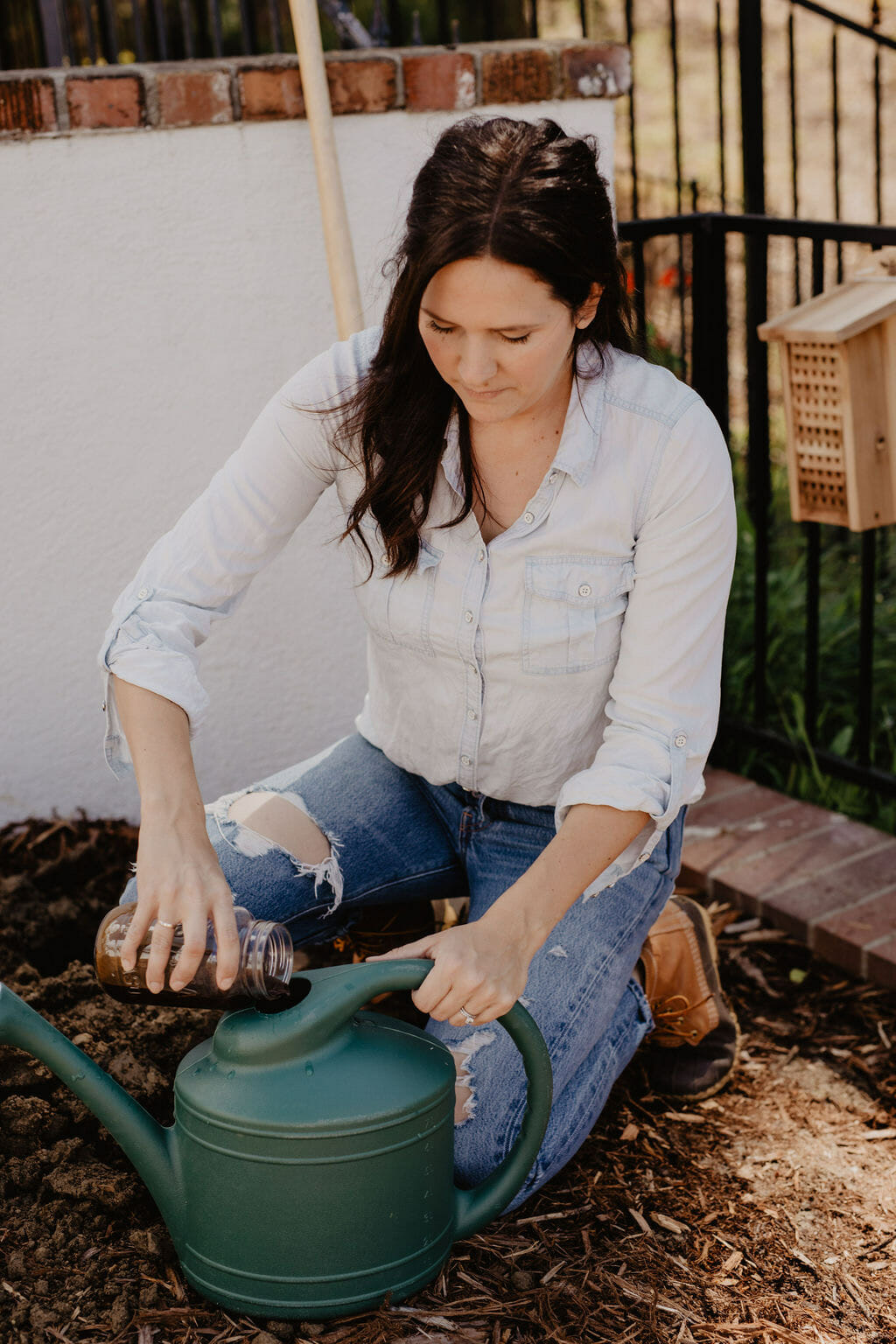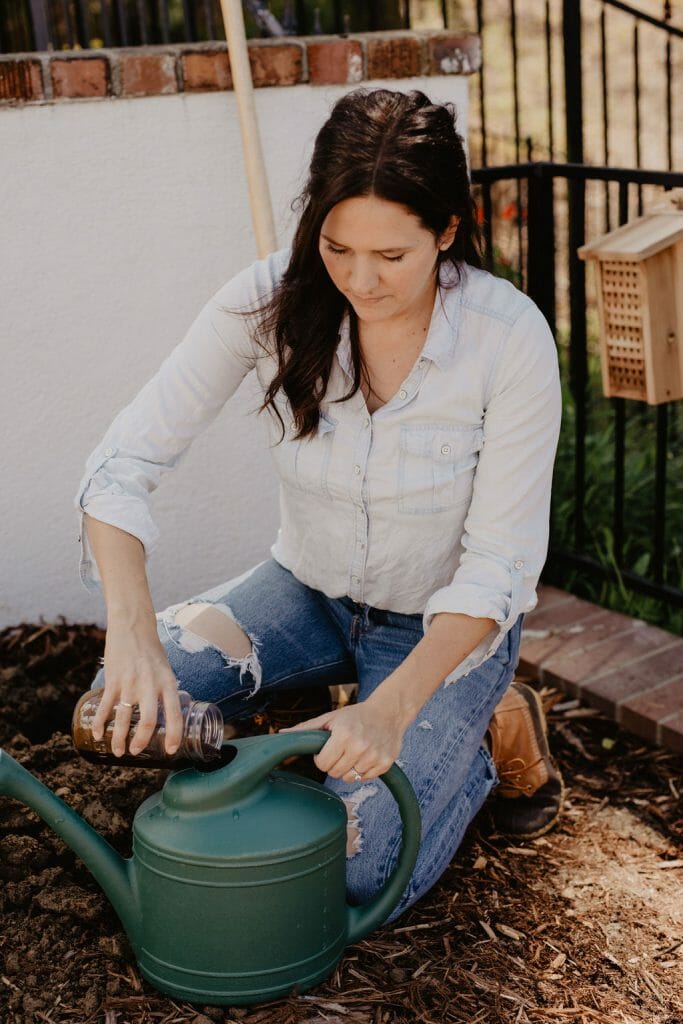
Soil Amendments to Boost Your Garden Mid-Season
There are many ways to use soil amendments, and I’ll walk you through the three approaches that I use below. In my first year at my current home, I got bulk soil delivered and didn’t amend it at all. It was a huge mistake as I found myself mid-season with veggies just not growing. At all. I should have amended the soil with worm castings in the very least, and added compost as well.
However, I did not, so I was totally dumbfounded, and so tried a few things to kickstart the garden again. What I ended up finding to be most successful was amending the soil in a few ways.
Typically you use soil amendments at the start of a new season, but mid-season you can side-dress your plants, working some materials into the soil to help nourish them.

Why do we amend soil?
Each season, after your plants have successfully grown and produced their flowers, fruit, or veggies, the soil becomes depleted. The plants have been sucking up all the nutrients, minerals, and good bacteria, leaving the existing soil lacking. This is very natural, and when in nature, bacteria, mychorrizae, and worms and insects do amending for us. Worm poop is the ultimate soil additive!
In a home garden, especially raised beds, the soil is disconnected from the essential web of nutrients, so we have to help it out. Keeping worms in your raised beds is a great way to do this, but birds can often clear those out. It’s common to use soil amendments in your raised beds at least twice a year to keep the soil healthy and happy.
Traditional Soil Amendments
There are three main ways that I amend soil:
- I amend a raised bed at the beginning of a season, before planting. I’ll add worm castings, compost, and maybe some slow release granular fertilizer.
- I amend native soil when planting in the ground. In this instance it depends on the native soil. I have clay soil, so I amend with vermiculite, compost, and a fish emulsion. You can see how I work my soil HERE.
- I amend soil that is panted in, mid-season with worm castings, a fish-based fertilizer, and blood meal.

Mid-Season Soil Amending
When working with the third option, amending your soil mid-season I do it by “side dressing” the plant. I loosen the soil about 4″ away from the plants, using a garden fork or my fingers. Then I gently scatter my amendments and pat them down. For adding liquid fish emulsion, I do this in the evening (after the sun has set. to prevent burning) and after watering. This helps the soil best absorb the liquid.
After about 2 weeks you should see a different in your plants. More growth, deeper green color, less pests, and a perkier deameanor. I always say: plants with good posture are happy plants.
Plants with good posture are happy plants!
Bailey van tassel

Amending your soil is not a one-sized fits all solution. Other growth inhibitors can be pest issues (aphids live to such vital nutrients out of plants, stunting their growth), low sun exposure, low water access, or pests that live below the soil like grubs who eat the tender roots of plants.
Keep a close eye on the garden, and be sure to check what each plant likes by way of extra nutrients. Here Ive recommended blood meal as a soil amendment, as it has very high nitrogen – it’s basically all nitrogen when it comes to NPK. Blood meal boots a plant’s growth and leaf development, but is not a grea long-term solution as it can stunt actual vegetable development, so keep that in mind.
Good luck with your garden, my friends, and if you have any soil amending tricks, share them in the comments!
